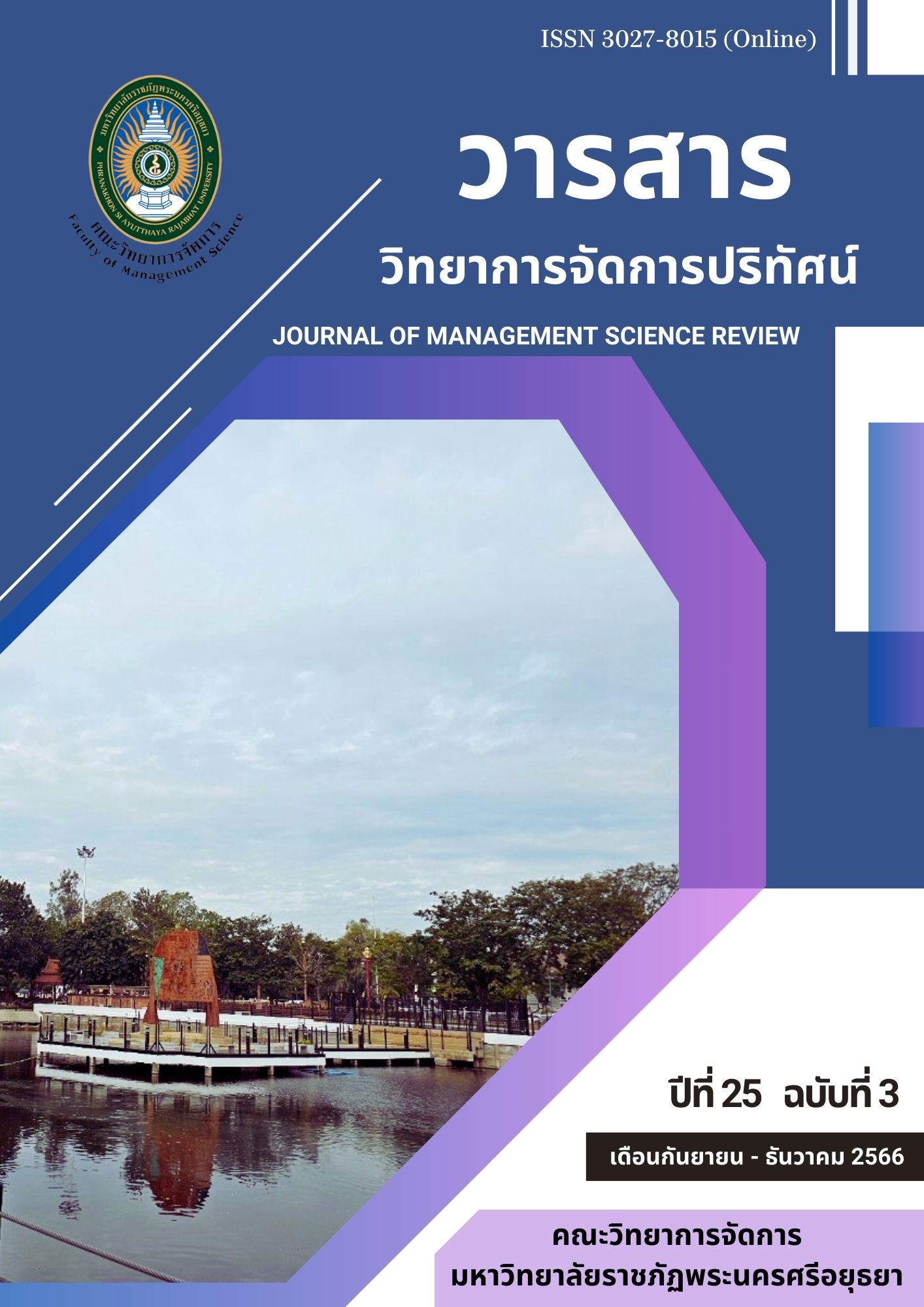การพัฒนาระบบเทคโนโลยีคิวอาร์โค้ด ในการตรวจสอบระบบความปลอดภัยของรถยกสินค้า บริษัท รับจัดเก็บสินค้าแห่งหนึ่ง ในจังหวัดพระนครศรีอยุธยา
คำสำคัญ:
เทคโนโยลีคิวอาร์โค้ด, การตรวจสอบระบบความปลอดภัย, รถยกสินค้าบทคัดย่อ
การวิจัยครั้งนี้ มีวัตถุประสงค์เพื่อ 1) พัฒนาระบบการตรวจสอบความปลอดภัยของรถยกสินค้าด้วยคิวอาร์โค้ด และ 2) ประเมินความพึงพอใจของระบบตรวจสอบความปลอดภัยของรถยกสินค้า กลุ่มตัวอย่างที่ใช้ในการวิจัย คือ พนักงานขับรถยกสินค้า จำนวน 12 คน สุ่มตัวอย่างแบบเฉพาะเจาะจง เครื่องมือที่ใช้เป็นแบบตรวจสอบความปลอดภัยของรถยกสินค้าด้วยคิวอาร์โค้ด และแบบสอบถามความพึงพอใจในการใช้งาน สถิติที่ใช้ในการวิเคราะห์ข้อมูล ได้แก่ ค่าจำนวนร้อยละ ค่าเฉลี่ย และส่วนเบี่ยงเบนมาตรฐาน
ผลการวิจัยพบว่า ระบบการตรวจสอบความปลอดภัยของรถยกสินค้าด้วยคิวอาร์โค้ด สามารถเก็บข้อมูลและวิเคราะห์ทางสถิติได้ นำมาวิเคราะห์เรื่องการใช้งาน การซ่อม รวมถึงการบริการต่าง ๆ และมีการจัดเก็บของข้อมูลที่ชัดเจน สอดคล้องกับนโยบายของทางผู้บริหารที่ต้องการลดเรื่องการใช้กระดาษ และหันมาใช้เทคโนโลยีในการจัดเก็บข้อมูลแทน อีกทั้งยังสามารถนำไปใช้ในการตรวจติดตามระบบบริหารจัดการอาชีวอนามัยและความปลอดภัย และงานความปลอดภัยของส่วนกลางได้ และผลการศึกษาระดับความพึงพอใจ เรื่องพัฒนาระบบการตรวจสอบความปลอดภัยของรถยกสินค้าด้วยคิวอาร์โค้ด อยู่ในระดับมากที่สุด (= 4.58, S.D. = 0.431)
เอกสารอ้างอิง
Asa Chumraksa. (2019). Developing the potential of managing laboratory information system using QR Code technology. Retrieved from http://reo16mnre.go.th/reo16/frontpage.URL 2019-08/20190822_jrlfdede.pdf.
Cresswell, J. W. & Clark, V.P. (2011). Designing and conducting mixed methods research (2nded.). London. : Sage Publications.
Denso Wave. (2016). Focus Group DisCussion. Retrieved from http://stafa.sakura.ne.jp/stafadesign/qrcode_140804/en/codes/logoq.ht.
Industrial Safety Technology Promotion Division. (2020). Statistics accidents at factory in 2020. Retrieved from http://sau-jeddah.mol.go.th.
Phanomwat, N. (2016). Definition of forklift. Retrieved from http://digital_collect.lib.buu.ac.th.
Pintusorn, et al., (2017). QR Code on mobile for durable articles management. Journal of Sripatum review of Science and Technology. 9(1), 88-97.
Rodchan, M., Inthasombat, U. & Muangpool, T. (2018). QR Code Based Application for Class Attendance Recording of territorial Defense Student. Journal of Information Technology Management and Innovation. 5(ng1), 88-96
Samranjai, S. (2017). Applying QR Code for Accessing through online Databases in Phetchaburi information Technology Campus Library, Silpakorn University. Journal of PULINET. 4(3), 216-222.
Social Security Office. (2020). A Situation of danger or illness 2017. Retrieved from http://sso.go.th/ wpr/assets/upload/802234.pdf.
Subbamre, R. (2016). Research methodology in Public Health. Bangkok: Odeon Store.
Thailand Institute of Occupational Safety and Health. (2021). Safety for Forklift. Retrieved from http://tosh.or.th/index.php/blog/item/818-forklift.
Thitima, et. al., (2020). Stock Management Application and Check Repair Status of wind turbines by QR Code case Study Three and Triple T Campany Limited. Journal of Industrid education. 14(2), 10-23.
Usa, et al., (2019). The development of scientific equipment and hazardous waste management system in the laboratory using QR Code in conjunction with Google drive service. In National Research Conference for Academic Support Personel in Higher Education Institution “Thongkwao Academic 62”. Chiangmai: Chiangmai University.
Chaichanaviro, U., & Vanthum, C. (2017). Content Validity testing of research tools. Journal of Nursing and Health Science. 11(2), 105-111





